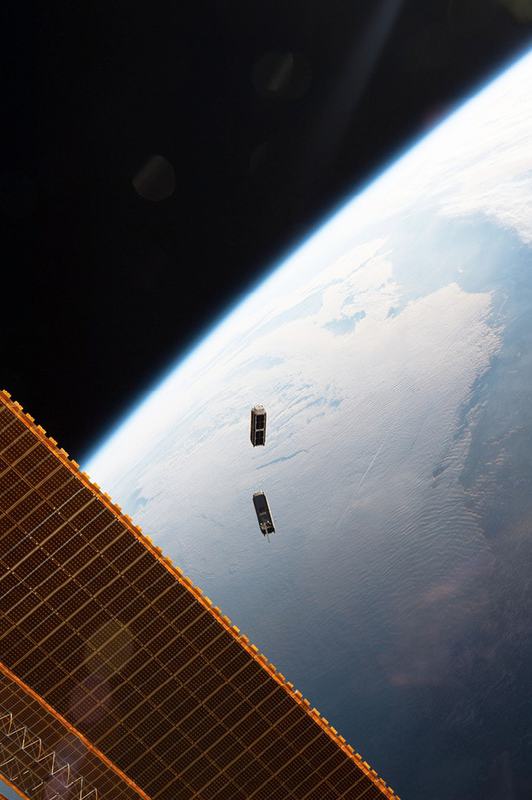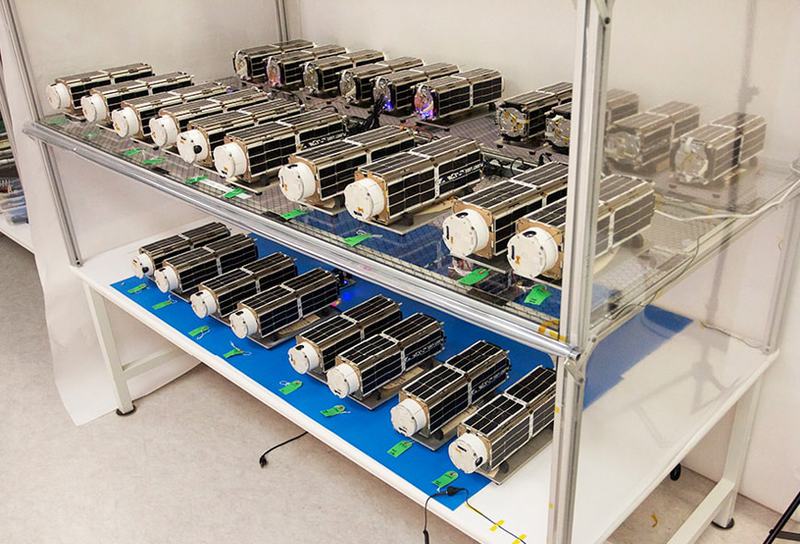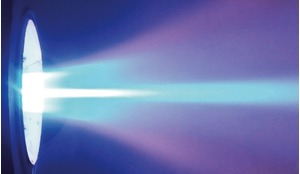Back in 2011, when Planet Labs was just a handful of engineers and scientists working in a garage in Cupertino, California, I was one of the first employees of the company and my main role was working on the radio subsystem. Being at a startup, I gradually collected more and more hats to wear, and I eventually grew into my current role as Director of Launch and Regulatory Affairs. From that garage, we set off to take a different approach to satellite design, and that attitude of nimbleness and innovation permeated into all aspects of the company, especially our launch strategy.
Planet is a commercial satellite company now headquartered in San Francisco, California, that takes a fundamentally different approach to aerospace and remote sensing. We build large quantities of small satellites, each weighing approximately 5 kg and based on the 3U Cubesat form factor. We launch and operate a fleet of these satellites to capture images of the entire Earth on a daily basis.
The satellite design is iterated every few months, ensuring the latest technologies are constantly being incorporated in the hardware and software, and the satellite parts are primarily sourced from Commercial-off-the-Shelf (COTS) components from the commercial electronics industry and integrated using modern manufacturing techniques; a process we call ‘agile aerospace’.
Satellite design is iterated every few months, ensuring the latest technologies are constantly being incorporated in the hardware and software
Planet has two main launch needs to fulfil our agile aerospace strategy. The first launch need is primarily for R&D purposes. Engineers will design ‘tech demo’ satellites that incorporate new hardware or software, and then launch it into space for testing under real-operational conditions.
 Dove satellites released from the International Space Station.
Dove satellites released from the International Space Station.
While many tests can be performed on the ground with specialised equipment to simulate the space environment, there is no better simulation than actually being there. The lessons from tech demo missions are folded into the technology evolution of the operational satellite fleet. It means Planet will accept a higher level of risk for a tech demo mission, including risk of launch failure and/or satellite failure, as a trade-off for quicker progress in improvements to the technology.
The second launch need is for operational fleets of satellites that generate product-quality images. Each individual satellite is based on the ‘Dove’ satellite design that has evolved from earlier tech demo missions. When Doves are launched in a large group, it is referred to as a ‘Flock’.
The size of a Flock can range from 12 identical satellites to over 100, depending on the capacity available on a given launch opportunity. To achieve whole-Earth coverage on a daily basis, we need a Flock of approximately 120 Dove satellites simultaneously operating at 500 km altitude in a sun-synchronous orbit (SSO).
Unlike the traditional aerospace approach of a single satellite with high levels of redundancy, the Planet satellites utilise a simpler design and spread the risk across the entire fleet. If one or two satellites experience on-orbit failures, the system as a whole remains largely unaffected.
An agile approach to satellite design and operation requires an equally agile launch strategy. And launch, to put it plainly, is risky business.
For starters, it is very difficult to predict when a launch will actually occur. Launch contracts are typically signed 18 to 24 months in advance, and a lot of things can happen leading up to the originally agreed upon launch date. Launches can suffer from schedule delays ranging from a few weeks to several years, and those delays can be due to factors outside of the customer’s control, including schedule slips associated with the readiness of the primary payload, the launch provider, or the launch site.
The strategy of ‘many eggs in many baskets’ has proven effective
On top of that, there is always the risk of launch failure or satellite deployment failure. Some launch vehicles have proven to be more reliable than others, but there is no such thing as a 100 per cent guarantee. To mitigate that risk, launch insurance can be purchased at a rate of approximately five to 10 per cent of the total amount insured. However, launch insurance only enables the recovery of lost cost – getting the satellites into orbit after a launch failure in a timely manner would still be a challenge that needs to be addressed.
With this in mind, Planet takes the ‘agile launch’ approach of manifesting satellites on several different launch opportunities to mitigate these inherent risks - in essence, putting many eggs in many baskets.
Watching a launch is an experience like no other, and at Planet we have historically averaged one launch every three months since 2013. We have a tradition of making pancakes at every launch viewing, regardless of the time of day (or night), and we all gather in front of a big screen to watch the action with bated breath.
The typical Planet employee has a combination of awe and fascination for space, along with a passion to do good on Earth, and each launch provides both a symbolic and literal milestone of progress towards our mission: image the entire Earth every day from space, and make global change visible, accessible and actionable.
 A group of Dove satellites.
A group of Dove satellites.
To date, Planet has launched 167 Dove satellites on 13 different launches. These launches came from a diversified portfolio of six different launch providers from three different countries. The strategy of ‘many eggs in many baskets’ has proven effective, as 11 of the launches were successful and a total of 133 Doves have reached orbit in the timespan of about three years.
An agile approach to satellite design and operation requires an equally agile launch strategy
Two of those launches failed to reach orbit, resulting in the loss of 26 Doves and eight Doves respectively. However, the system as a whole remained intact. We would never have been able to mature the technology, grow our expertise in satellite manufacturing and operations, and expand our operational on-orbit fleet so quickly and effectively if we had simply manifested on a single launch.
The launches of our first two satellites, Dove 1 and Dove 2, were initially scheduled to be several months apart. As luck would have it, the launch dates ended up two days apart, which we used to our great advantage. Dove 1 was launching on the maiden flight of the Antares, and the maiden flight of any rocket is usually considered high risk. In addition, the Antares was dropping us off at an altitude below 300 km, which meant the mission lifetime of the satellite would be approximately six days. On the other hand, Dove 2 was launching on a Soyuz-2 1a, one of the most reliable launch vehicles in the whole world, and to a much higher altitude (and thus a longer lifetime for the satellite).
For Dove 1, we chose a sixth generation Dove, which had advanced technology but at the time was a brand new design and considered higher risk. For Dove 2, we chose a fourth generation Dove that was a more stable design and considered much lower risk. Instead of having to choose between a high risk, advanced technology mission, or a low risk, stable technology mission, we could do both, and we matched the level of risk of the satellite to the level of risk of the launch (i.e. high risk satellite on the high risk launch, low risk satellite on the low risk launch). In the end, both missions were a complete success, and the company was able to simultaneously achieve two major technology milestones, in large part thanks to our diversified launch portfolio.
Choosing launch opportunities to build out a diversified launch portfolio can be a highly complex process with many trade-offs. Opportunities come in three basic varieties: dedicated launch vehicles, secondary launches and nanolaunchers.
A dedicated launch is when a customer purchases rights to an entire launch vehicle and has complete control of the orbit, schedule, etc. Dedicated launch vehicles appropriately sized for small satellites that are currently operating include Pegasus, Minotaur-C, Vega, PSLV and Dnepr. Controlling the orbit and schedule partially mitigates the risks associated with schedule delays, but there are still many factors outside the customer’s control that could cause delays (eg, a launch failure on a preceding launch).
Factors to be considered when evaluating dedicated launch opportunities include vehicle payload capacity (aka ‘throw mass’), launch vehicle reliability rate, the launch provider’s backlog of manifested launches, total price, and any geopolitical concerns.
Secondary launch opportunities (aka ‘piggyback’ launches), take advantage of the unused capacity when a primary customer books a dedicated launch for themselves but doesn’t fill up the entire vehicle. This approach allows smaller payloads to get access to launch vehicles that are oversized for their needs, such as the Falcon 9, Antares, Atlas V and Soyuz.
Despite the wide range of launch opportunities available there is no one option that does not come without risk
Cubesats are particularly suited as secondary payloads because they can be arranged in a modular fashion to fit almost any volume and mass constraint within the unused space of the launch vehicle. In addition, Cubesats are interchangeable and, if a customer is not ready for the launch, they can be replaced by a different Cubesat customer waiting on standby.
 Planet Labs co-founder and chief strategy officer, Robby Schingler, makes traditional launch-day pancakes with the team.
Planet Labs co-founder and chief strategy officer, Robby Schingler, makes traditional launch-day pancakes with the team.
Regulatory licensing concerns aside, a swap like that could happen only a few days before launch with effectively no impact on the launch vehicle or the primary payload. The disadvantage of a secondary launch is that you no longer have control of the launch schedule, and ultimately your position on the launch is contingent on the good graces of the primary customer.
Nanolaunchers represent a new wave of small-class launch vehicles currently under development that are specifically tailored to the needs of small satellites. The industry recognised leaders include Rocket Lab, Firefly and Virgin Galactic - however, dozens of companies around the world are attempting to build similar types of vehicles.
The promised benefits of nanolaunchers include regularity of flight (some claim an eventual goal of weekly launches, as opposed to traditional launch vehicles that only launch a handful of times a year), tailored orbit and schedule (the same benefit as traditional dedicated vehicles as described above), and lower per-launch costs.
 On a rare, cloud-free day in the Democratic Republic of Congo, agricultural pasture fires burn on the vast, grassy lowlands of Bandundu Province.
On a rare, cloud-free day in the Democratic Republic of Congo, agricultural pasture fires burn on the vast, grassy lowlands of Bandundu Province.
Despite the wide range of launch opportunities available, including dedicated launches, secondary launches and nanolaunch, there is no one option that does not come without risk.
Planet intends to maintain a diversified launch portfolio across several different launch vehicles to best ensure access to space in a timely manner. We built a business from scratch and we were able to develop a launch strategy to accommodate our unique needs, risk tolerance, and timelines that (literally) propelled us to becoming one of the most prolific satellite manufacturers and operators in recent history.














